Construction Lasers Guide
Accuracy
The accuracy of a laser is typically measured in terms of distance or grade. For distance accuracy, it is important to look at the range that the laser can accurately measure. One example of a highly accurate construction laser is the Leica Rugby 670 Rotary Laser Level. This laser has an accuracy of ±1.5 millimeters over a range of up to 800 meters. Another factor to consider is grade accuracy, which refers to the ability of the laser to maintain a level grade over a designated area. A top-quality choice for grade accuracy is the Trimble Spectra Precision LL300S Rotary Laser Level, which offers an accuracy of ±10 arc seconds when used with the included receiver up to a distance of 500 meters.
In the market, construction lasers can be categorized into groups such as rotary lasers, line lasers, and dot lasers. Rotary lasers emit a laser beam that rotates in a full circle, making them ideal for wide-range leveling applications. Apart from the above-mentioned Leica Rugby 670, another accurate option in the rotary laser group is the Spectra Precision HV302G. On the other hand, line lasers project a straight, horizontal or vertical beam for precise alignment and leveling tasks. A top-notch line laser edition is the DEWALT DW089K Self-Leveling 3-Beam Line Laser. Finally, dot lasers emit point-sized beams, often used in smaller scale interior applications like tile alignments. For this purpose, an ideal choice is the Bosch GLL 55 Cross Line Laser.
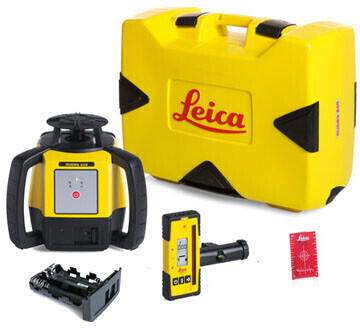
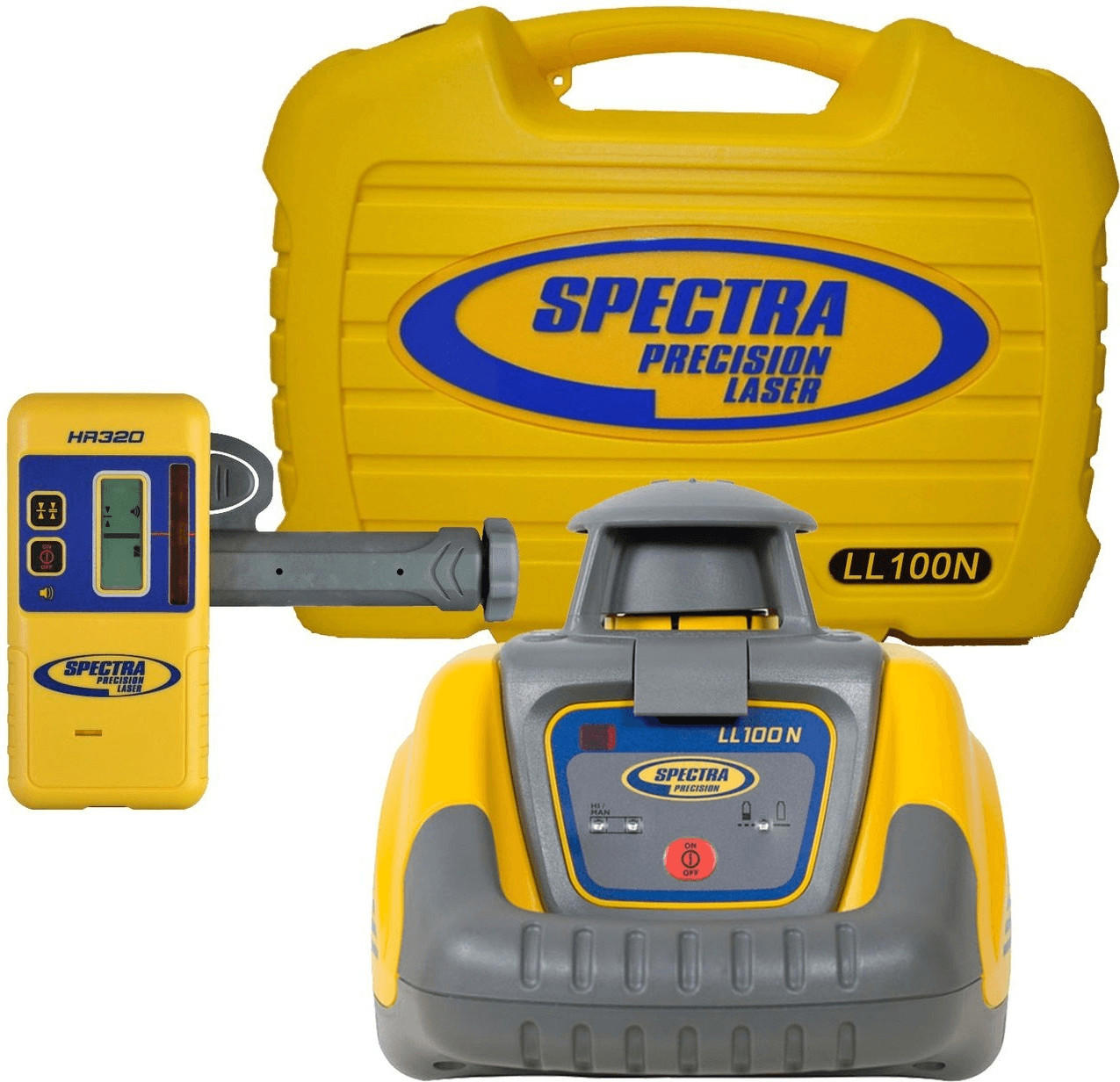

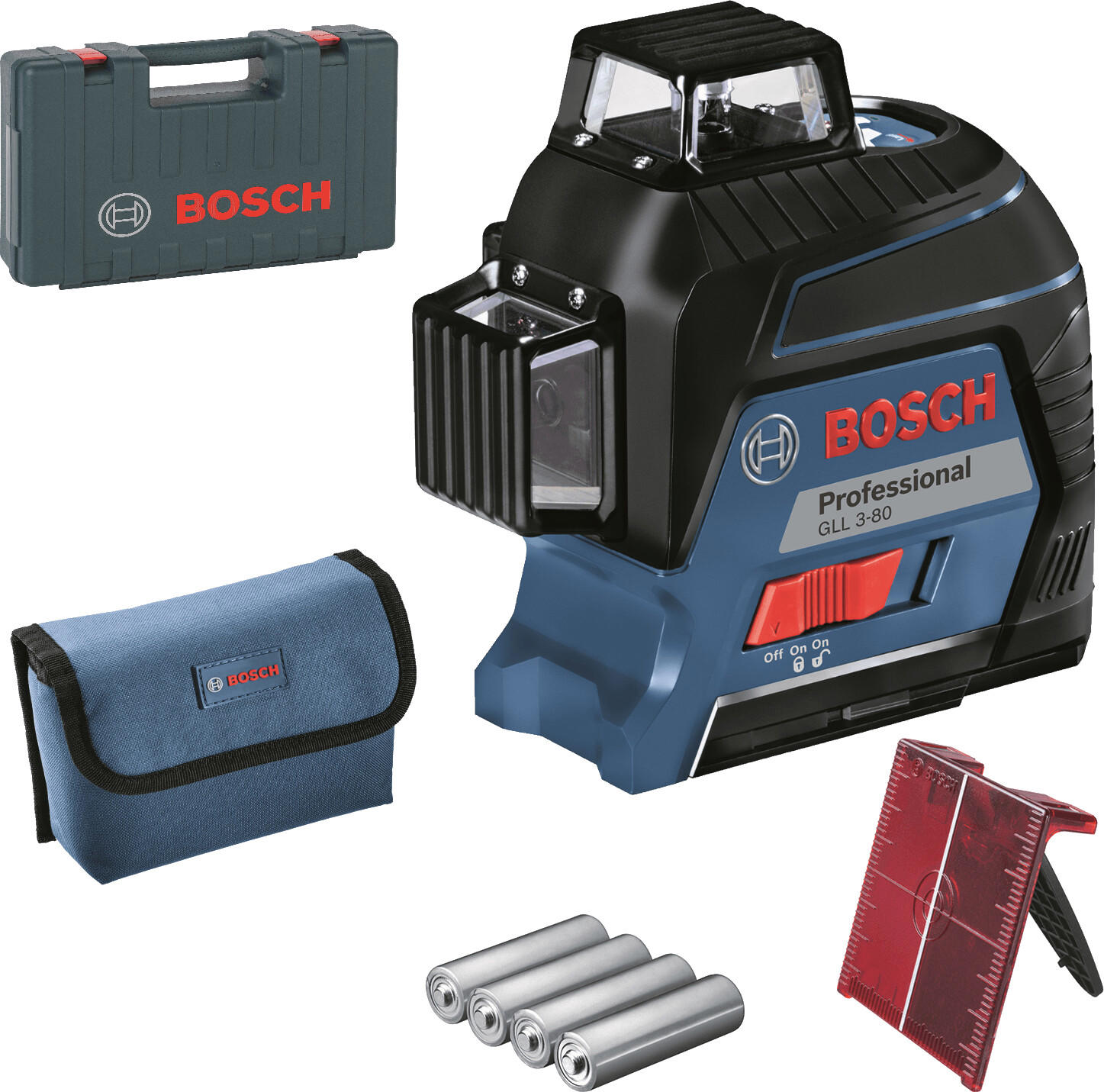
Range
When it comes to choosing the best construction laser for your needs, one crucial factor to consider is the range. The range refers to the maximum distance over which the laser beam is projected. This is an essential parameter as it determines the laser's suitability for your specific construction applications.
There are a variety of construction lasers available on the market today, catering to different ranges. Some entry-level models, such as the DEWALT DW088K Self-Leveling Cross Line Laser, have a relatively short range of around 100 feet. These lasers are ideal for smaller construction projects or indoor work.
For larger-scale projects or outdoor use, higher-range construction lasers are recommended. The Bosch GRL400HCK Exterior Self-Leveling Rotary Laser Kit offers an impressive range of up to 1,300 feet. This rotary laser is perfect for accurately leveling and aligning on construction sites over significant distances.
In terms of range, construction lasers can be grouped into entry-level, mid-range, and high-end categories based on their maximum projection distances. Some other notable options include the Topcon RL-H5A Self-Leveling Rotary Laser, which has a range of 2,600 feet, and the Leica Rugby Laser Level, which offers an astounding range of 3,000 feet. Choose the construction laser that aligns with your project requirements and extends the necessary range for accurate measurements and layouts.

Laser type
There are primarily two types of construction lasers: rotating lasers and line lasers. Rotating lasers emit a 360-degree laser beam that rotates, allowing for accurate leveling and alignment measurements. A popular rotating laser on the market is the Topcon RL-H5A, which offers a working range of up to 1,300 feet and self-leveling within ±3 degrees.
On the other hand, line lasers project a straight laser line in either a horizontal or vertical direction, providing precise alignment and layout. A notable line laser is the Bosch GLL 3-80 CG, which offers bright green laser lines for excellent visibility, self-leveling within ±4 degrees, and a working range of up to 200 feet. It also features Bluetooth connectivity for remote control and laser placement. Grouping the products, we have:
Rotating lasers:
Topcon RL-H5A- DeWalt DW079LG
Line lasers:
Bosch GLL 3-80 CG- Leica Lino L2G+
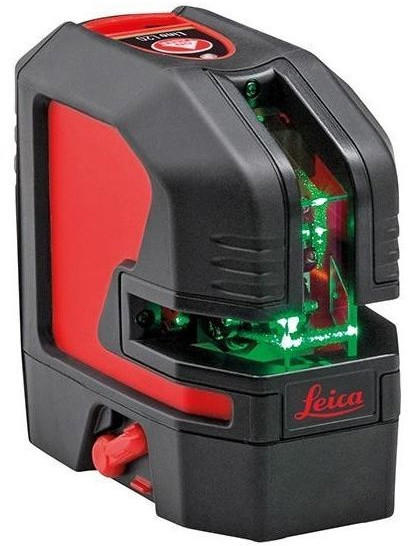
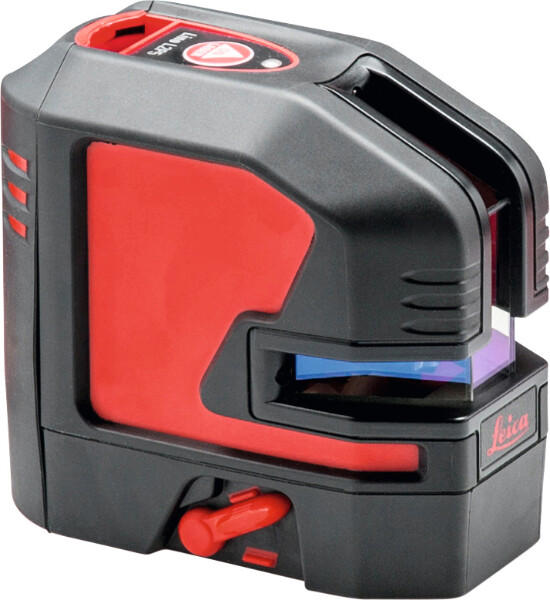
Note: The specifications mentioned are for illustrative purposes and accurate as of writing. Always refer to the product specifications provided by the manufacturer for updated and precise information.
Self-leveling
Self-leveling lasers automatically adjust their position to maintain a level line or plane, resulting in highly accurate measurements and precise leveling. One product that offers excellent self-leveling capabilities is the DEWALT DW088K. This construction laser features a self-leveling range of 4 degrees, providing accurate results even on uneven surfaces. Another option is the Bosch GLL 55, which offers a self-leveling range of 4 degrees as well. With its integrated VisiMax technology, the Bosch GLL 55 ensures maximum visibility and reliable leveling, making it suitable for both indoor and outdoor applications.
Mounting options
There are a variety of mounting options to choose from depending on the specific needs of your project. Some common mounting options include wall mount brackets, tripod mounts, and pole mounts. For example, the DeWalt DW089LG 3 x 360 Green Line Laser offers both wall mount brackets and a 1/4" and 5/8" thread for mounting on a tripod or pole. Alternatively, the Leica Lino P5 Dot Laser includes a magnetic multifunction adapter that allows for flexible mounting options, such as attaching to metal surfaces or using a tripod mount. Additionally, the Bosch GTL3 Professional Tile Laser offers a practical solution for tile installation with a versatile four positioning mount that allows for attachment to multiple surfaces, ensuring accurate leveling for each tile. Remember to select a construction laser with the appropriate mounting options to suit the specific requirements of your project.
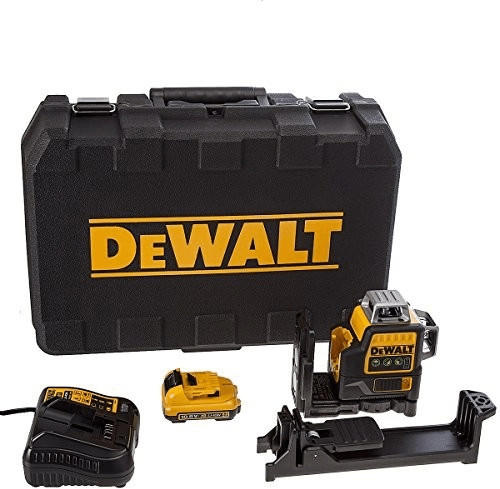
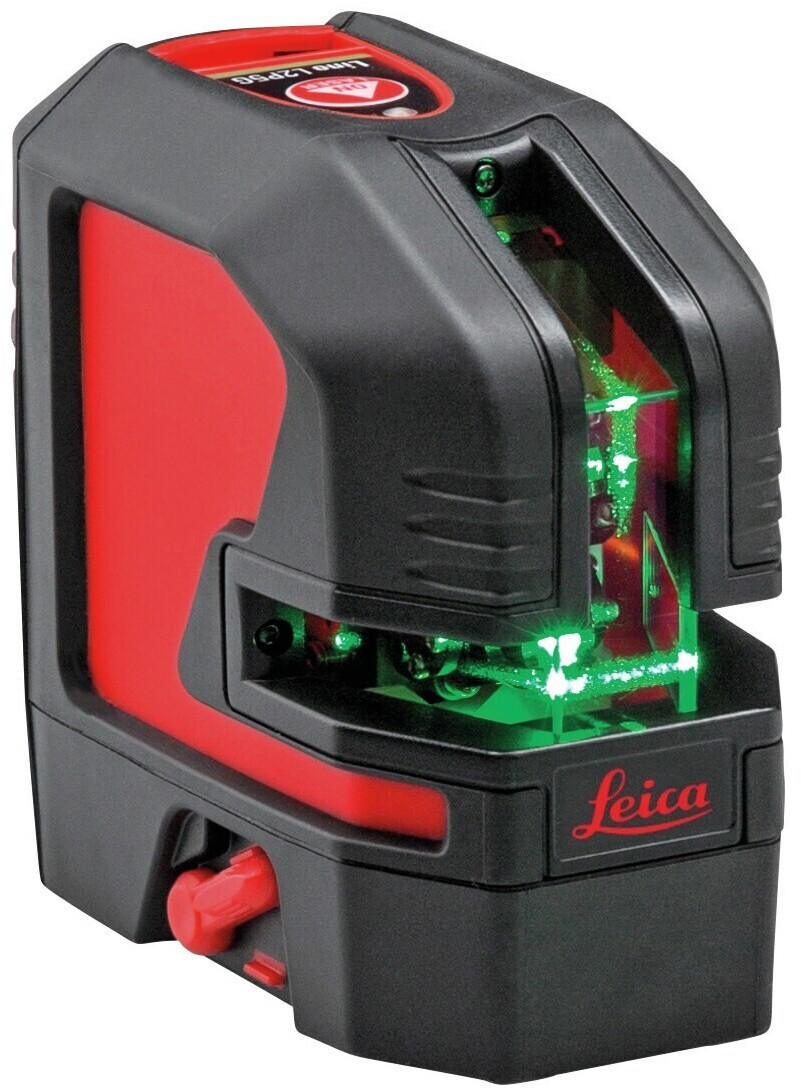

Connectivity options
The connectivity of the laser can greatly impact its versatility and compatibility with other devices. Many construction lasers now come equipped with Bluetooth connectivity, allowing for wireless communication between the laser and other devices such as tablets or smartphones. This provides the convenience of easily controlling and adjusting the laser settings remotely. One example of a construction laser with Bluetooth connectivity is the Leica Rugby CLH laser. It offers a range of up to 300 meters and can connect to other devices via Bluetooth, making it a convenient option for tasks that require remote control and data transfer. Another connectivity option to consider is the ability to connect to other laser receivers for improved accuracy over longer distances. One product that offers this feature is the DEWALT DW074KDT Rotary Laser Kit. It can connect to a laser receiver up to an impressive 1800 feet away, ensuring precise measurements even in large construction projects.

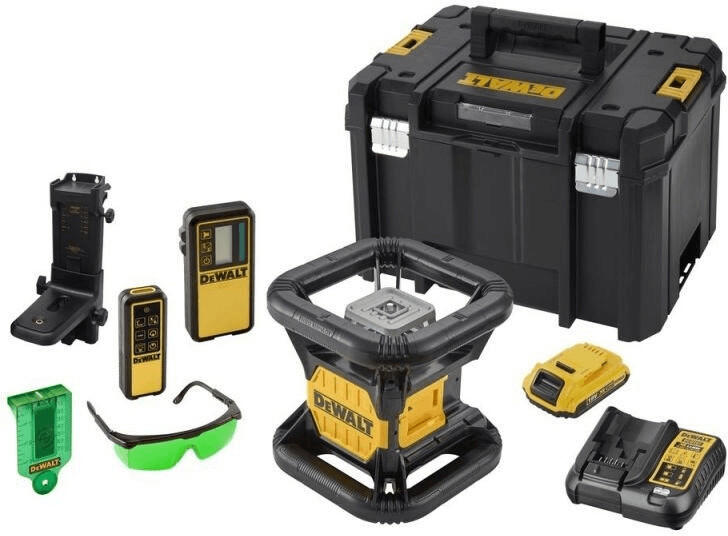
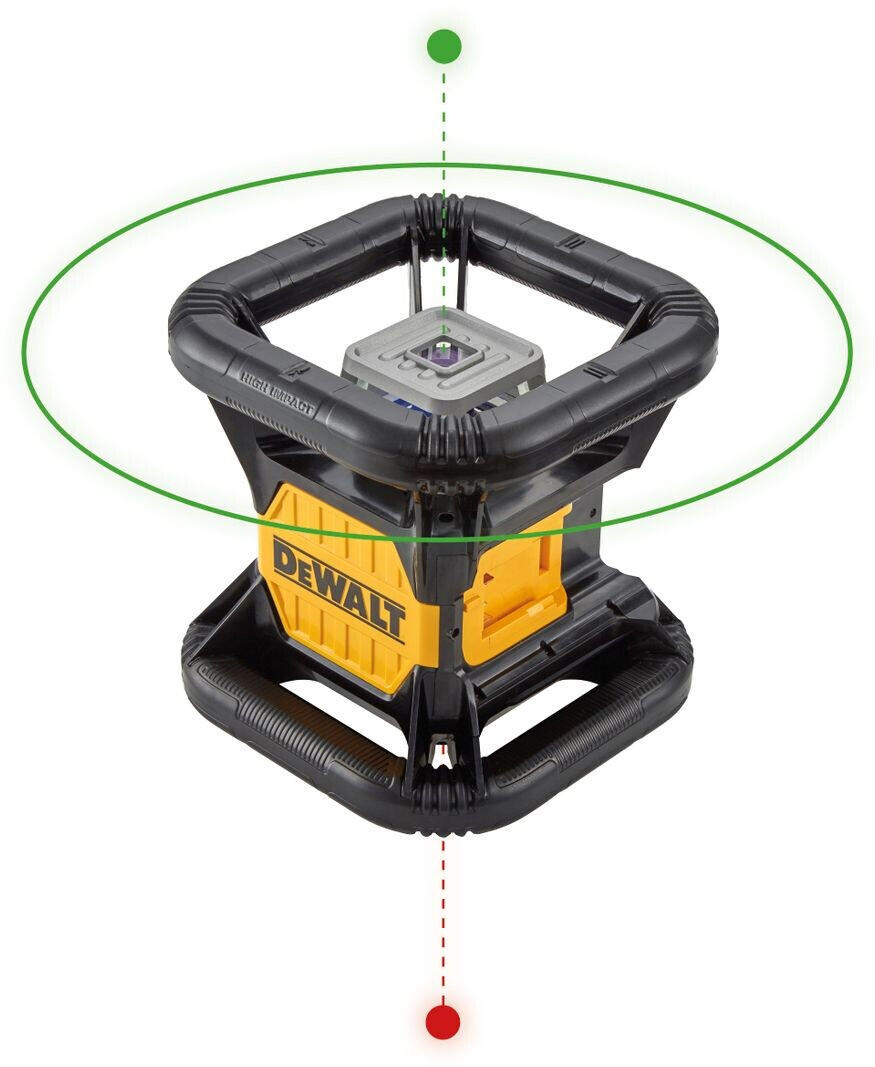
Battery life
Having a construction laser with a long battery life ensures that you can complete your projects efficiently without interruptions. One product to consider is the Trimble Spectra Precision LL300N Laser Level, which boasts a battery life of up to 90 hours on a set of C-cell alkaline batteries. This laser level is ideal for both indoor and outdoor applications and offers a working range of up to 1,650 feet (500 meters). Another option is the Leica Rugby CLX200 Construction Laser, which features a rechargeable Li-Ion battery that provides a battery life of up to 50 hours. This laser level also offers an IP68 protection rating, making it resistant to dust and water and perfect for tough construction environments.
- Group 1: Longest Battery Life
- Trimble Spectra Precision LL300N Laser Level - Battery life of up to 90 hours on C-cell alkaline batteries
- Leica Rugby CLX200 Construction Laser - Battery life of up to 50 hours with rechargeable Li-Ion battery

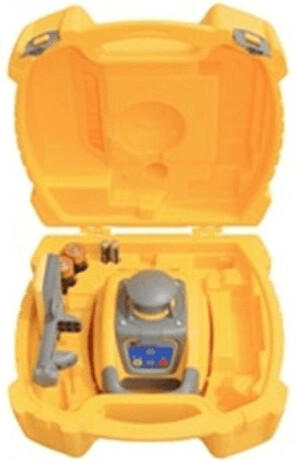

Beam spread
It refers to the angle at which the laser beam expands as it travels further from the laser source. A wider beam spread implies a larger beam diameter at a given distance, providing better visibility and accuracy across a broader area. On the other hand, a narrower beam spread concentrates the laser beam into a more focused point, offering precise measurements over a smaller distance.
In terms of construction lasers with varying beam spreads, there are a few notable products available on the market. In the category of lasers with a wider beam spread, the Spectra LL300N Self-Leveling Laser stands out, with a beam diameter of 2.5 inches at 100 feet. Another impressive option is the Topcon RL-H5A Horizontal Self-Leveling Rotary Laser, which offers a beam diameter of 15 inches at 100 feet, providing excellent visibility even in challenging job site conditions. Alternatively, for those seeking construction lasers with a narrower beam spread, the Leica Rugby 320SG Single Grade Laser is an excellent choice, as it provides a beam accuracy of 1/16 inches at 100 feet, allowing for more precise measurements over shorter distances.
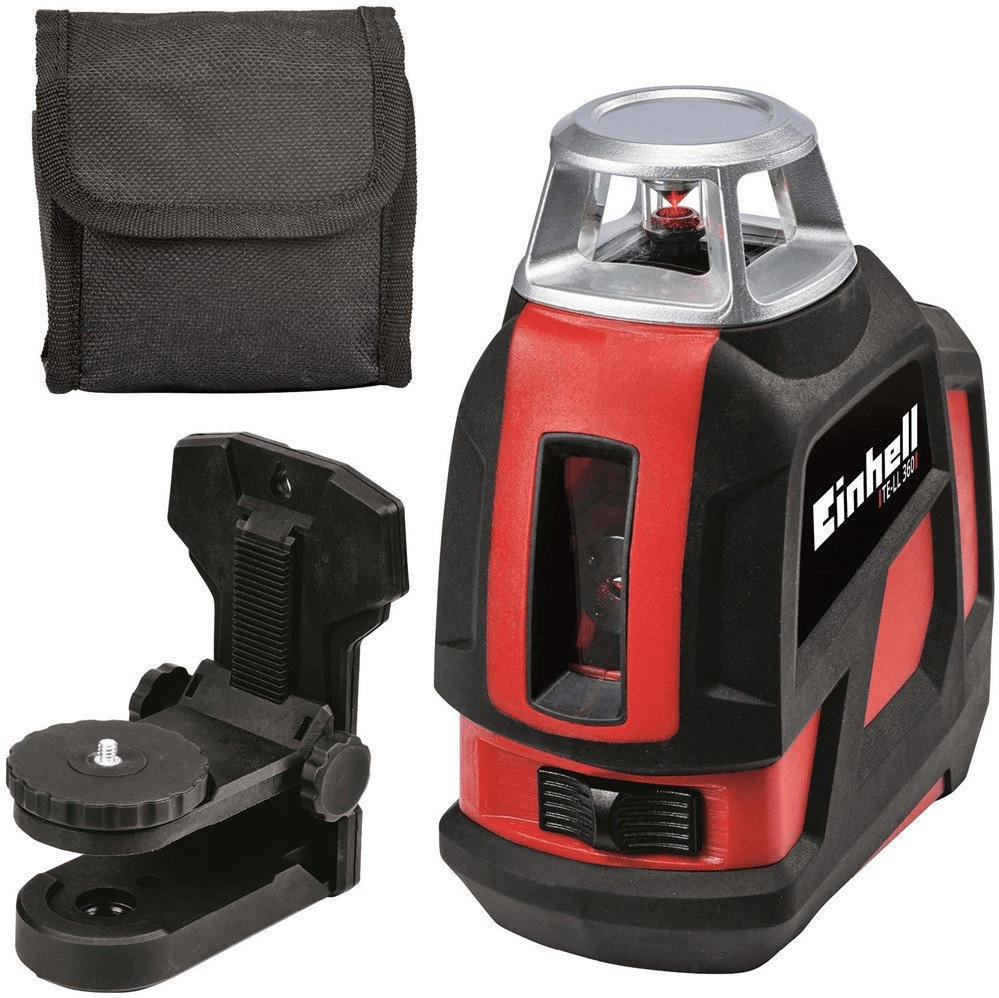
Safety features
Look for lasers that have specific safety features to protect both the user and those in the vicinity. One important safety feature to consider is a locking mechanism, which prevents accidental activation or adjustments. For example, the Bosch GPL3 construction laser includes a Smart Pendulum System that self-levels and locks when switched off, ensuring it remains in optimal position during transportation. Another important safety feature is a visual or audible alarm that warns the user when the laser has been disturbed or moved from its intended position. The DEWALT DW088K is an excellent choice in this regard, as it comes with a highly visible beam that includes a self-leveling laser that turns off if it is knocked out of position, accompanied by an out-of-level indicator.
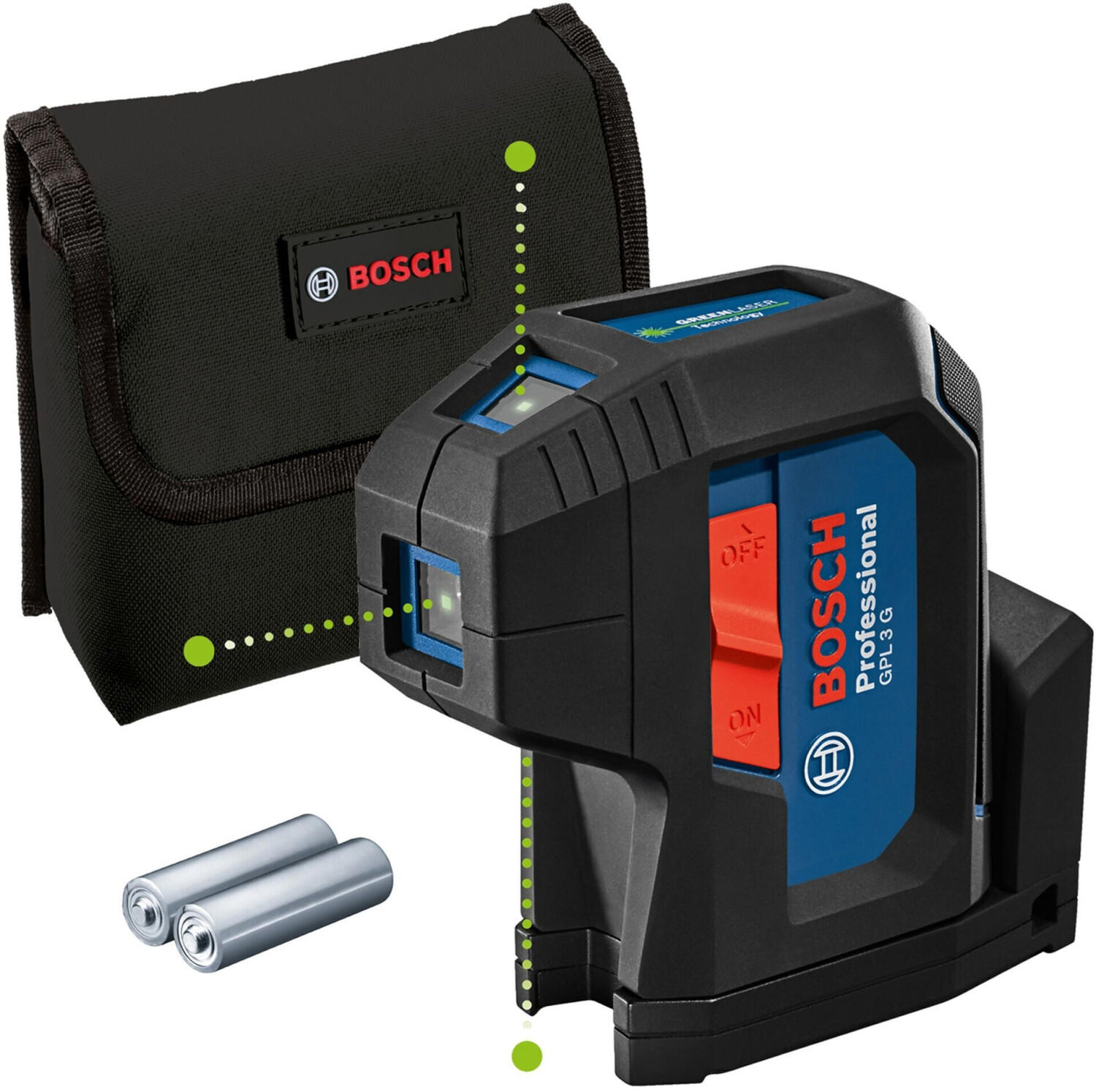
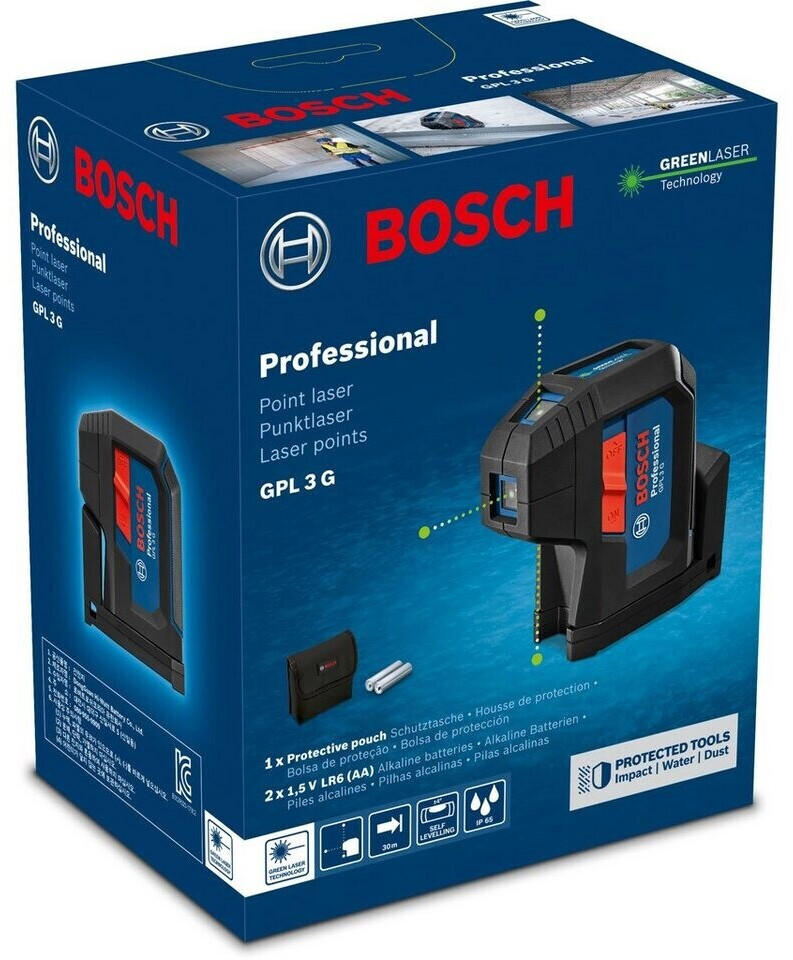
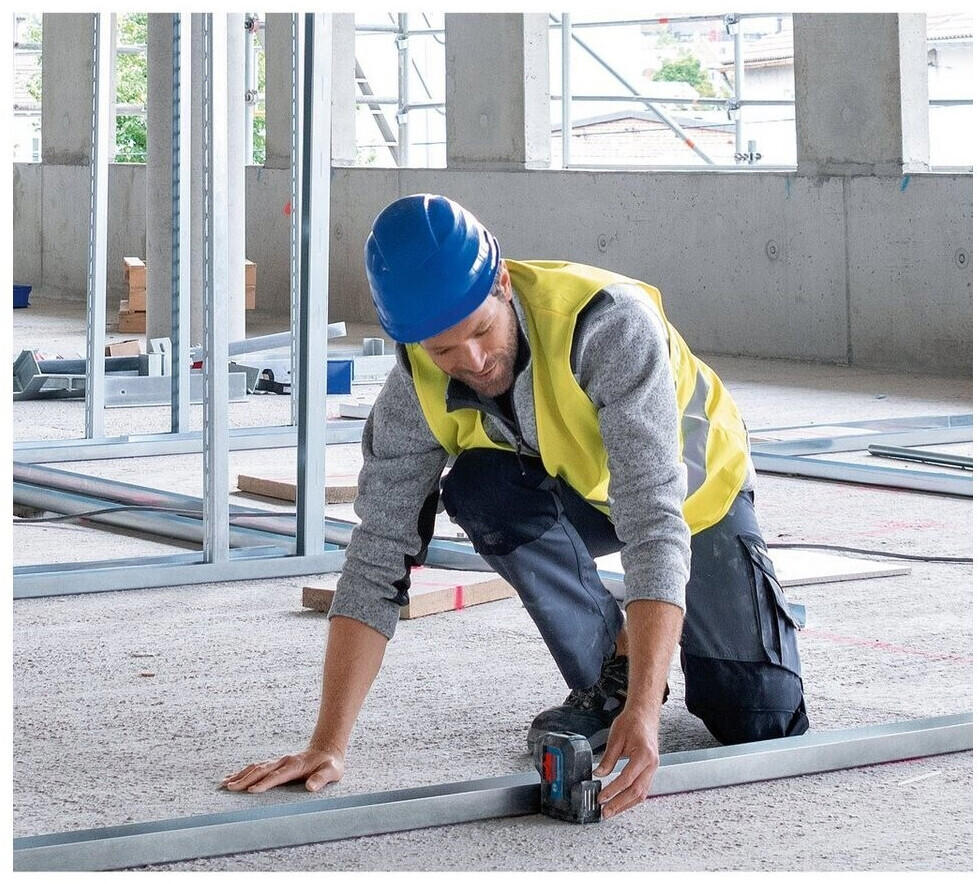
Visibility (indoor/outdoor)
For indoor projects, a self-leveling cross line laser that offers high visibility is ideal. The Bosch GLL 55 boasts a highly visible 2 lines with a 33 feet range indoors. It features special pulse mode functionality that enhances the line visibility with a receiver, making it suitable for long distance indoor applications.
On the other hand, for outdoor applications, a rotary laser that can combat the challenges of daylight and long distances is recommended. The DEWALT DW080LRS rotary laser impresses with its bright red beam, visible up to 2000 feet. It is designed for outdoor use and provides an accuracy of ± 1/16 inch at 100 feet with a self-leveling range of ±5 degrees. This laser also features an IP67 rating, meaning it is dustproof and water-resistant, ensuring durability even in harsh outdoor conditions.
Control panel
A user-friendly and intuitive control panel can greatly enhance the usability and efficiency of the laser. Look for a laser that has a control panel with clear and easy-to-read displays, as well as well-organized function buttons. The control panel should provide access to various functions, such as switching between different scan modes, adjusting rotation speed and laser beam size, and even remote control capabilities. Some recommended construction lasers with excellent control panels include the Spectra Precision LL300N Laser Level, which features a simple yet comprehensive control panel with single-axis slope mode adjustment, and the Topcon RL-H4C Self-Leveling Rotary Laser, which offers user-friendly control buttons and a large LCD display for easy operation.
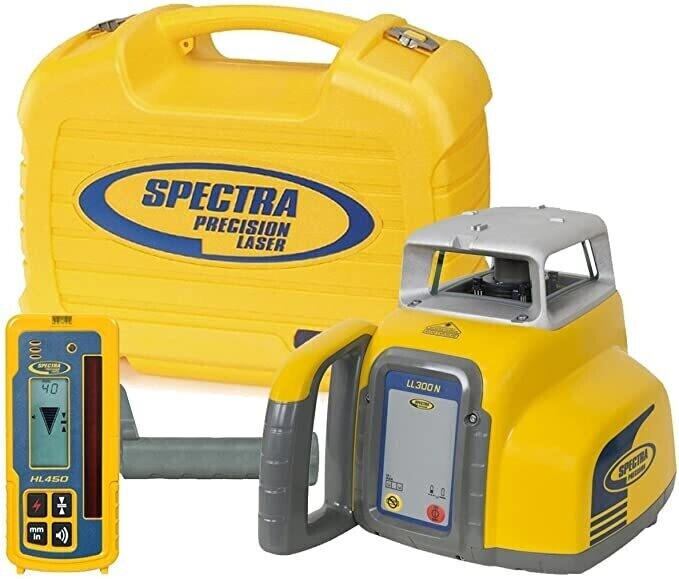

Tripod compatibility
A compatible tripod ensures stability and accuracy while using the laser. Some construction lasers come with their own specific tripod, such as the DEWALT DW088K Self-Leveling Cross Line Laser. This laser is compatible with the DEWALT DW0881 Tripod, which features a locking mechanism and a 360-degree rotating head for flexible positioning.
Other construction lasers have a universal tripod mount, allowing them to be used with a wide range of tripods. If you already own a tripod, you can opt for such lasers like the Bosch GLL 3-80 360 degree Three-Plane Leveling and Alignment-Line Laser. This laser supports mounting on both standard 5/8-inch tripod thread and also has a 1/4-inch thread for compatibility with camera tripods. Similarly, the Leica Rugby 640G Green Beam Self Leveling Rotary Laser features a proprietary Quick-Lock tripod system, ensuring a reliable fit with Leica's heavy-duty tripods, offering hassle-free setup for construction professionals.
Ease of use
Construction sites are often chaotic and time-sensitive environments, so having a laser that is intuitive and user-friendly can make a significant difference in productivity. One example of a construction laser that excels in ease of use is the Leica Rugby CLA One Touch. This laser features a one-button operation, allowing users to quickly and effortlessly set up and level the device. Additionally, the RL-H5A from Topcon is another great option with its "Auto Alignment" feature, which allows for automatic self-leveling and eliminates the need for manual adjustments. Both these lasers offer an easier user experience, allowing construction professionals to streamline their work and improve overall efficiency.
Dust/water resistance
Construction sites often present harsh environments with dust and water, so it is important to select a laser that can withstand these conditions. The Bosch GLL3-330CG 360° Connected Green Beam Laser Level is an excellent choice as it is rated IP54, which means it is completely dustproof and can withstand water splashes from any direction. For a more rugged option, the Leica Rugby CLH Construction Laser is rated IP68, making it not only dustproof but also capable of withstanding continuous water immersion up to 2 meters for 30 minutes. These lasers provide peace of mind, even in tough construction conditions where dust and water are omnipresent.

Shock resistance
Construction sites often involve rigorous tasks and the laser needs to withstand accidental drops or impacts to ensure durability. The Leica Rugby 670 Construction Laser is an excellent choice as it offers robust shock resistance, meeting the MIL-STD-810G military standard. With this level of durability, it can withstand the demands of various job sites. Another option is the Spectra Precision LL300N Laser Level, which is engineered with rugged over-mold housing that provides shock resistance. Its durability is evident as it passes a 3-foot drop test on concrete without sustaining any damage. These construction lasers are ideal for professionals working in rough construction environments.



Laser class
There are different Laser classes available, ranging from Class 1 lasers that are considered eye-safe, to Class 4 lasers that are higher in power and should be used with caution.
Within the Class 1 category, theSpectra Precision LT56, Leica Lino P5, and DEWALT DW089K are popular options. These lasers emit a visible laser beam that is safe for the eyes and have a maximum output power of less than 1 milliwatt. They are ideal for interior applications such as plumbing, electrical work, and aligning windows.
For Class 2 lasers, the Bosch GLL 30 and TOPCON RL-H4C are recommended choices. They emit a visible laser beam with a maximum output power of less than 1 milliwatt, making them safe for brief exposure to the eyes. These lasers are suitable for both interior and shorter-range exterior applications like grading and leveling.
In the Class 3R segment, the Trimble Spectra Precision GL412N and Huepar 903CG are widely used. These lasers emit a visible laser beam with a maximum output power of less than 5 milliwatts, ensuring that they are safe for brief accidental exposure to the eyes. They are suitable for both indoor and outdoor applications, including landscaping and concrete work.
When it comes to Class 3R red beam lasers, the Bosch GRL400H and Hilti PR 2-HS are frequent choices. These lasers emit a visible red rotating laser beam with a maximum output power of less than 5 milliwatts. They are designed for long-range exterior leveling and grading applications.
Class 3R green beam lasers, such as the TOPCON RL-H5A and Stanley STHT77341, are also popular. These lasers emit a visible green rotating laser beam that is more visible to the human eye compared to red beams. They have a maximum output power of less than 5 milliwatts, making them safe for brief accidental exposure. These lasers are commonly used for exterior applications requiring high visibility, such as site preparation and trenching.
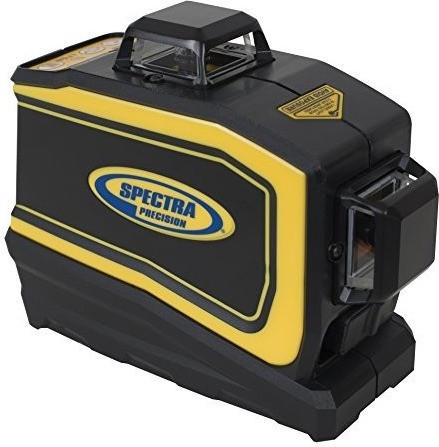

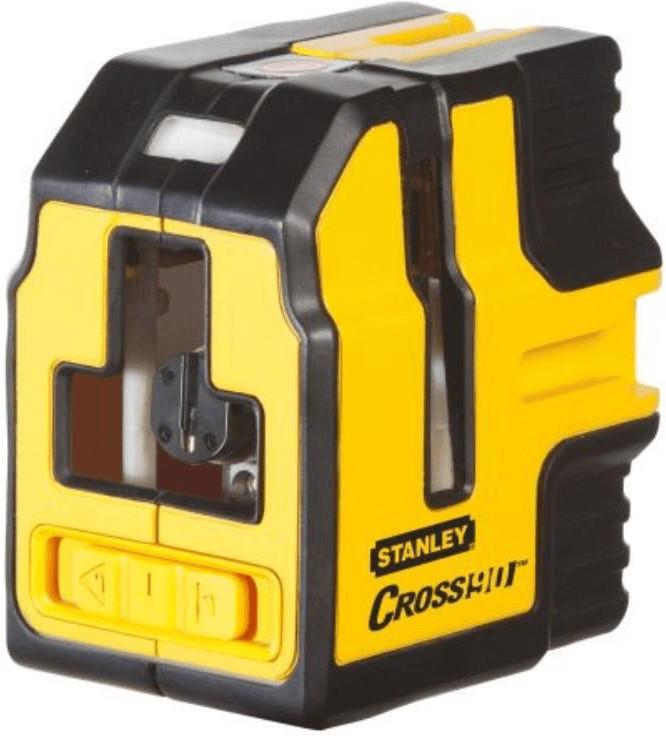
In the Class 4 category, lasers such as the Leica Rugby 680 and Spectra Precision GL742 provide a higher power output suitable for long-range exterior applications such as deep excavation and securing benchmarks. It is important to exercise caution when working with Class 4 lasers, as extended exposure to the beam can cause eye damage.


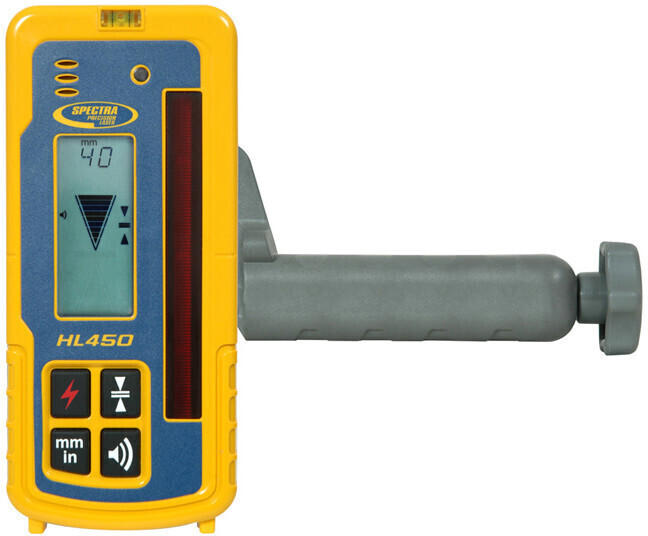
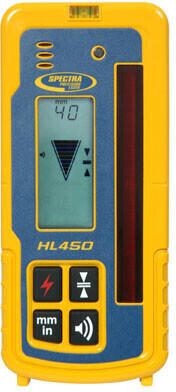
Pulse mode
The pulse mode is essential for measuring over longer distances and in outdoor environments where there may be interference from sunlight or other sources of light. It allows the laser to emit a series of short, intense bursts of laser light, making it easier to detect the beam even in difficult conditions. One example of a construction laser that offers a reliable pulse mode is the Leica Rugby 610 Rotary Laser. It has a pulse mode range of up to 1,300 feet, allowing for accurate measurements over long distances. Another option is the Topcon RL-H5A Rotary Laser, which features a pulse mode that can be detected up to 2,600 feet away, ensuring precise measurements even in challenging outdoor environments. These lasers are ideal choices for construction professionals looking for reliable and accurate measurements in various conditions.

Scan mode
Scan mode refers to the ability of the laser to rotate continuously or in specific angles, allowing it to project laser beams in all directions for greater accuracy and efficiency. There are several construction lasers in the market that offer different scan modes to suit different project requirements.
One example of a construction laser with an excellent scan mode is the Leica Rugby CLH Rotary Laser. This laser offers horizontal and vertical scanning functionality to ensure precise and quick leveling, aligning, and plumbing tasks. It has a 360-degree rotating head and a scan mode that covers a variety of angles, allowing for full room coverage. Additionally, the laser's scan mode can be adjusted from wide to narrow to customize the scanning area based on the project needs.
Another product to consider is the Spectra Precision LL300N Laser Level. It features self-leveling and a scan mode that offers 360-degree coverage, enabling accurate and reliable results in both horizontal and vertical applications. The laser's scan mode can be set at various speeds and angles, ensuring desired coverage across different job sites.



These are just a few examples of construction lasers with robust scan modes, demonstrating the importance of considering this feature when choosing the best one for your projects.
Slope mode
This mode allows the laser to project a beam at a specific slope angle, making it ideal for incline and decline measurements. The DEWALT DW074KD Self-Leveling Interior/Exterior Rotary Laser Kit offers a Slope mode feature with a grade range of ±5 degrees, making it suitable for a wide range of construction projects. Another option is the Bosch GRL400H Self-Leveling Rotary Laser Kit, which also includes a Slope mode with a grade range of ±8 percent. This allows for more precise slope measurements and is especially beneficial for jobs that require accurate grading, such as road construction or landscaping.
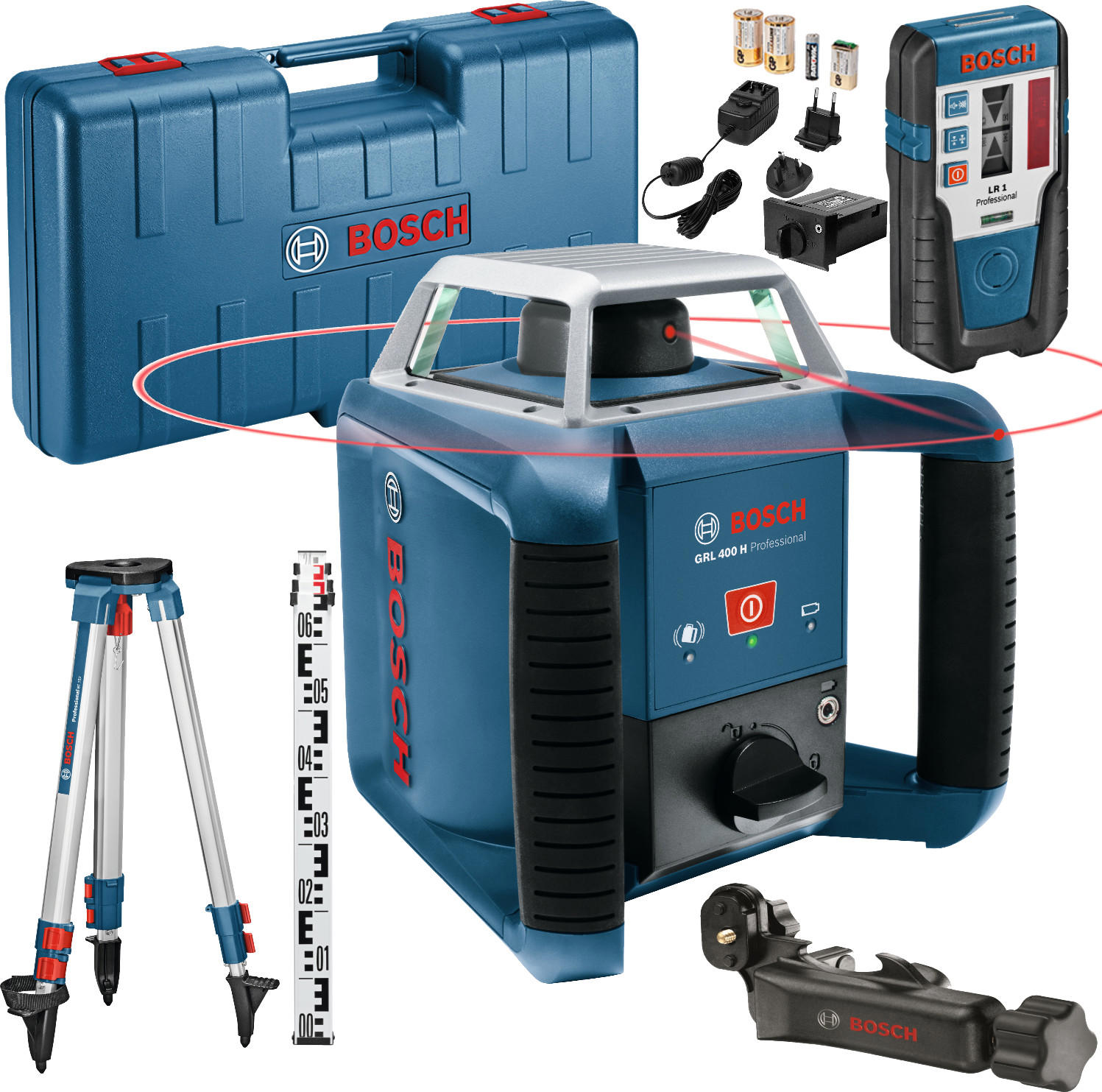
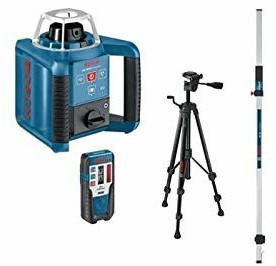
Remote control
With a remote control, you can easily operate the laser from a distance, allowing you to make adjustments or control the laser without having to physically be near it. This is especially beneficial when working on larger construction sites or in hard-to-reach areas.
One example of a construction laser with remote control is the DEWALT DW088K Self-Leveling Cross Line Laser. This laser offers a remote control that allows you to easily switch between horizontal and vertical lines, as well as control the on/off function. It has a range of up to 100 feet, providing flexibility and convenience during construction tasks. Additionally, the Bosch GLL 55 Self-Leveling Cross-Line Laser is another great option with a remote control feature. This laser features one-button operation for easy control and produces highly visible lines for accurate leveling and aligning. It also comes with a 360-degree magnetic rotating mount for versatile positioning.

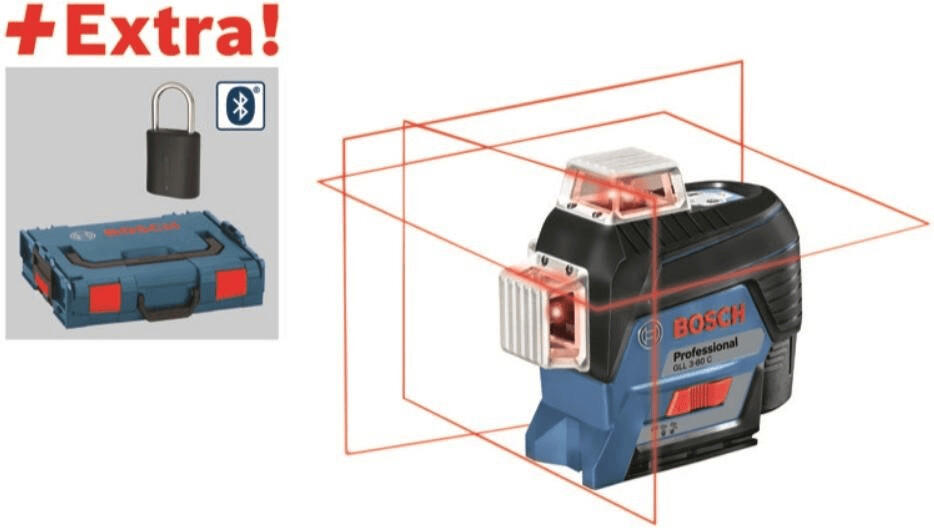
Display type
There are several options available, each with its own advantages and disadvantages. One popular choice is a red dot display, such as seen in the DEWALT DW089LG 12V MAX 3 x 360 Green Line Laser. This type of display projects laser lines onto surfaces and is easy to see in both indoor and outdoor settings. Another option is a digital display, which can provide more detailed information about measurements and settings. The Bosch GLL3-330CG 360-Degree Green Beam Self-Leveling Laser is an excellent example of a construction laser with a digital display. These types of displays provide clear numerical readings and often feature additional features such as self-leveling capabilities. Lastly, there are rotary displays that produce a 360-degree light source, making them suitable for large construction projects. Product examples in this category include the Topcon RL-H5A and the Spectra Precision LL300N. These lasers offer bright and visible rotary beams that can be adjusted to different rotation speeds to accommodate various projects.
Memory storage
It allows you to store and retrieve measurement data, increasing efficiency and productivity on the job site. Some construction lasers offer internal memory storage, while others feature external storage options such as USB ports or SD card slots.
One example of a construction laser with excellent memory storage capabilities is the 'Leica Rugby CLH'. This laser provides internal memory storage of up to 3000 points, enabling the user to store and recall multiple measurements easily. Additionally, the 'Pentax PLP300' construction laser offers both internal and external memory storage, allowing for quick on-site data backup and transfer via its integrated USB port.

Another noteworthy segment worth considering is rugged construction lasers designed specifically for outdoor use in harsh environments. Products like the 'Trimble Spectra Precision LL300N' or the 'Topcon RL-H5A' come equipped with ample internal memory storage and are built to withstand the toughest conditions, providing reliable performance and durability in demanding construction projects.
Alignment/targeting aids
These aids enhance accuracy and precision during leveling and alignment tasks. One popular product option is the Trimble Spectra Precision LL300S Laser Level, which utilizes advanced digital processing technology to deliver highly accurate and stable results. This laser level offers both a single-axis and dual-axis slope mode, catering to a wide range of applications. With its high-speed self-leveling feature, it reduces setup time and ensures quick and precise measurements. Another notable device is the Leica Rugby 640 Laser Level, which comes equipped with an innovative plumb-down beam that simplifies alignment, especially for applications like formwork and anchor bolt alignment. Additionally, its Smart Lock functionality enables easy slope setup and remote control function.
Alternatively, construction lasers can be categorized into two distinct groups: rotary lasers and line lasers. The Hilti PR 2-HS A12 Rotary Laser falls into the rotary laser category and provides reliable horizontal and vertical leveling. Its automatic orientation and detection technology ensure precise alignments, making it suitable for both outdoor and indoor applications. On the other hand, line lasers like the Bosch GTL3 Professional Tile Laser deliver highly visible lines, enhancing alignment and tile placement accuracy. This compact and lightweight laser provides horizontal, vertical, and sideways lines, making it a versatile option for construction projects requiring precise layouts.


Weight
The weight of the laser can affect its portability and ease of use on the job site. Lighter construction lasers are typically more convenient to carry around and allow for longer operation without causing strain or fatigue to the user.
For those looking for a lightweight construction laser, the 'Leica Rugby CLA' is a great option. Weighing only 3.3 pounds, this laser offers exceptional portability without compromising performance. Another product worth considering is the 'Spectra Precision LL100N' with a weight of 4.8 pounds, making it suitable for a range of construction applications. In the segment of heavier-duty construction lasers, the 'Topcon RL-H4C' weighs 5.1 pounds while providing advanced features like automatic self-leveling and long-range operation. Whether you require a light or heavier construction laser, considering the weight of the devices can greatly impact your overall user experience and work efficiency.
Dimensions
The dimensions of the construction laser will determine its size and weight, which can affect its portability and ease of use. For instance, the Hilti PR 300-HV2S is a compact and lightweight construction laser with dimensions of 8.2 x 8.2 x 7.2 inches and a weight of just 19.8 pounds. This makes it suitable for small to medium-sized projects where portability is key.
On the other hand, for larger-scale projects that require higher precision and longer working ranges, the Topcon RL-H5A is a popular choice. With dimensions of 8.3 x 6.9 x 14.5 inches and weight of 4.8 pounds, it offers advanced features such as long-range visibility of up to 800 meters and ±1.5mm accuracy at 30 meters. This makes it ideal for construction sites with greater distances and a need for precise measurements.
Considering the dimensions of the construction laser is crucial as it determines not only the portability and ease of use but also the suitability of the laser for different project requirements.
Software compatibility
Not all construction lasers are compatible with all software programs, so it is crucial to ensure that the laser you choose is compatible with the software you use or plan to use for your projects. One example of a construction laser that offers software compatibility is the Leica Rugby series. These lasers are specifically designed to work seamlessly with the Leica iCON Site Software, which allows for easy data transfer, stakeout, and construction verification. Another option is the Spectra Precision Focus series, which is compatible with the Spectra Precision Survey Pro software to facilitate site measurement, data management, and field operation. It is essential to properly research and consider the software compatibility of a construction laser in order to optimize usage and maximize efficiency in construction projects.


Accessories availability
Having easy access to compatible accessories can enhance the functionality and versatility of the laser, allowing for more accurate and efficient measurements. Some construction lasers offer a wide array of compatible accessories, such as the Trimble Spectra Precision LL300N Laser Level, which is compatible with a various range of receivers, remote controls, and mounting options, making it suitable for different job sites and applications. Another example is the Bosch GLL 55 Self-Leveling Cross-Line Laser, which provides compatibility with a tripod, a wall mount, and a magnetic mount, allowing for flexible positioning in different construction environments. These accessories can improve the ease of use and productivity when working with construction lasers.




Service and support
When it comes to construction lasers, service and support are crucial factors to consider. The reliability of a laser depends not only on its performance but also on the support provided by the manufacturer or the seller. Look for manufacturers who offer excellent customer service, including technical support, warranty coverage, and product training. For instance, Leica Geosystems is a reputable manufacturer known for its exceptional customer service. They provide comprehensive after-sales support, including prompt technical assistance and a 3-year warranty on their products. Another example is Topcon Positioning Systems, which also offers top-notch customer support and warranty coverage on their construction lasers.


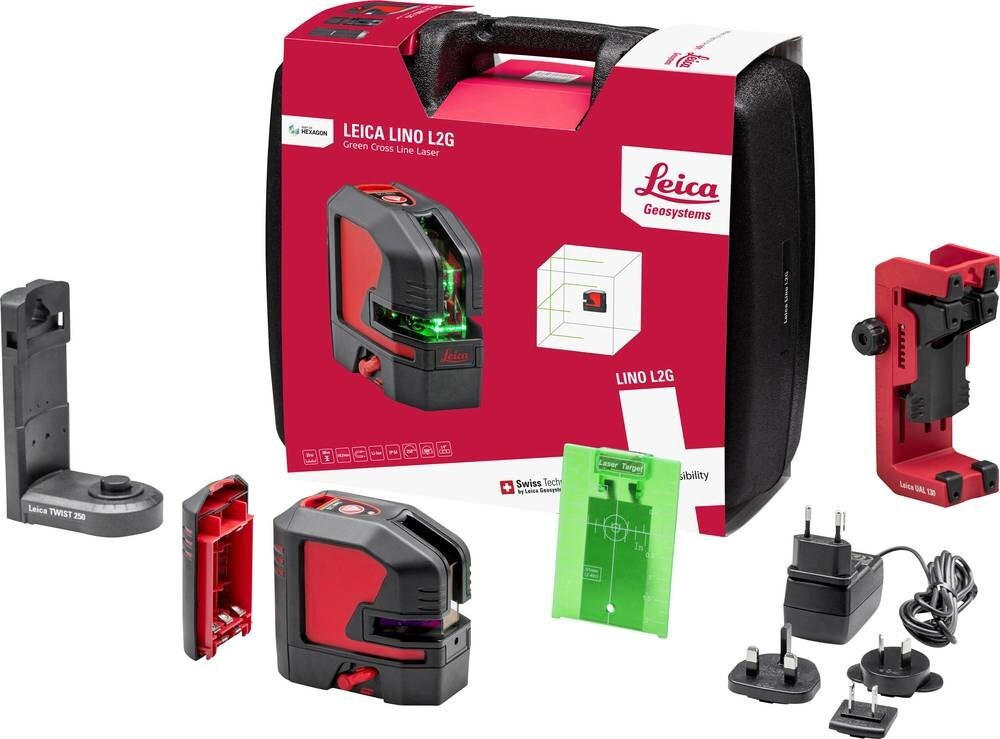
Training resources
Look for products that come with comprehensive user manuals and clear instructions, as well as training videos or tutorials. One example of a construction laser that provides excellent training resources is the DEWALT DW088K Self-Leveling Cross Line Laser. This laser comes with a user manual that provides detailed information on its features and functions, making it easy for users to understand its operation. Additionally, it offers a training DVD that provides step-by-step instructions on setting up and using the laser for various construction tasks. Another example is the Bosch GCL 2-160 Self-Leveling Cross Line Laser with Plumb Points, which also includes a user manual that explains how to operate the laser effectively, and it offers YouTube videos that demonstrate its setup and usage. These training resources ensure that users can make the most of their construction lasers while minimizing errors and achieving accurate results.
Expanded functionality options
Some construction lasers go beyond basic leveling and offer advanced features that can greatly enhance efficiency and productivity on the job site. For example, the Leica Rugby CLH is a laser level that not only provides a rotating beam for horizontal leveling, but also has the ability to auto-adjust the laser level's grade on sloping surfaces. This feature eliminates the need for manual adjustments, making it ideal for grading and excavating applications.
Another example is the Trimble Spectra Precision LL500, which not only provides accurate leveling capabilities but also offers the option to connect with a remote control for convenient operation from a distance. This feature is particularly useful when working in large spaces or difficult-to-reach areas. Additionally, some construction lasers, like the Topcon RL-H5A, provide long-range capabilities, allowing for precise measurements even over considerable distances. These lasers are ideal for large-scale construction projects or when surveying expansive areas.



In summary, the expanded functionality options available in construction lasers can greatly enhance their usefulness on the job site. Whether it's auto-grade adjustment, remote control capabilities, or long-range measurements, choosing a construction laser that offers these advanced features can greatly improve productivity and accuracy in construction and surveying tasks.
Compatibility with other equipment
Ensure that the laser level you select is compatible with the accessories and additional tools that you use on the job site. For example, if you frequently work with a digital target or receiver, consider a construction laser that has a compatible interface such as the Leica Rugby 640G Green Beam Rotary Laser. This powerful laser provides compatibility with Leica's digital receivers, ensuring accurate and efficient measurements. Other lasers, like the Bosch GRL 500 HV Rotary Laser, are compatible with both 1.5V D-cell batteries and rechargeable NiMH battery packs, providing flexibility and extended operation time on the job site. Technical compatibility is crucial to optimize your construction laser's performance when working with different equipment and accessories.
In terms of product segmentation, construction lasers can be categorized into rotary lasers, line lasers, and dot lasers. Rotary lasers, such as the Topcon RL-H5A Rotary Laser Level, emit a full 360-degree laser plane to provide horizontal and vertical leveling. Line lasers, like the DEWALT DW088K Self-Leveling Line Laser, project a highly visible laser line for aligning and leveling tasks. Lastly, dot lasers, such as the Huepar 903CG Green Beam Cross Line Laser, emit multiple dots to mark reference points and right angles. Consider the type of construction work and the compatible equipment needed when making a selection from these different categories.
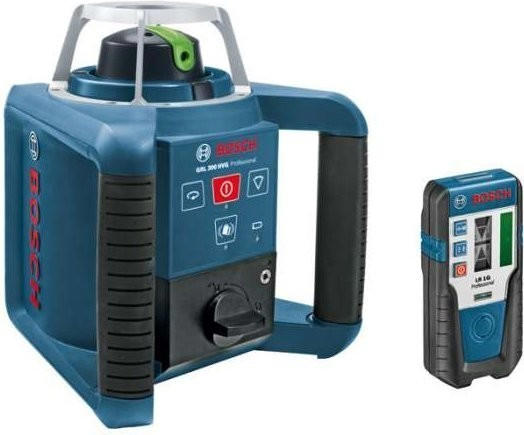
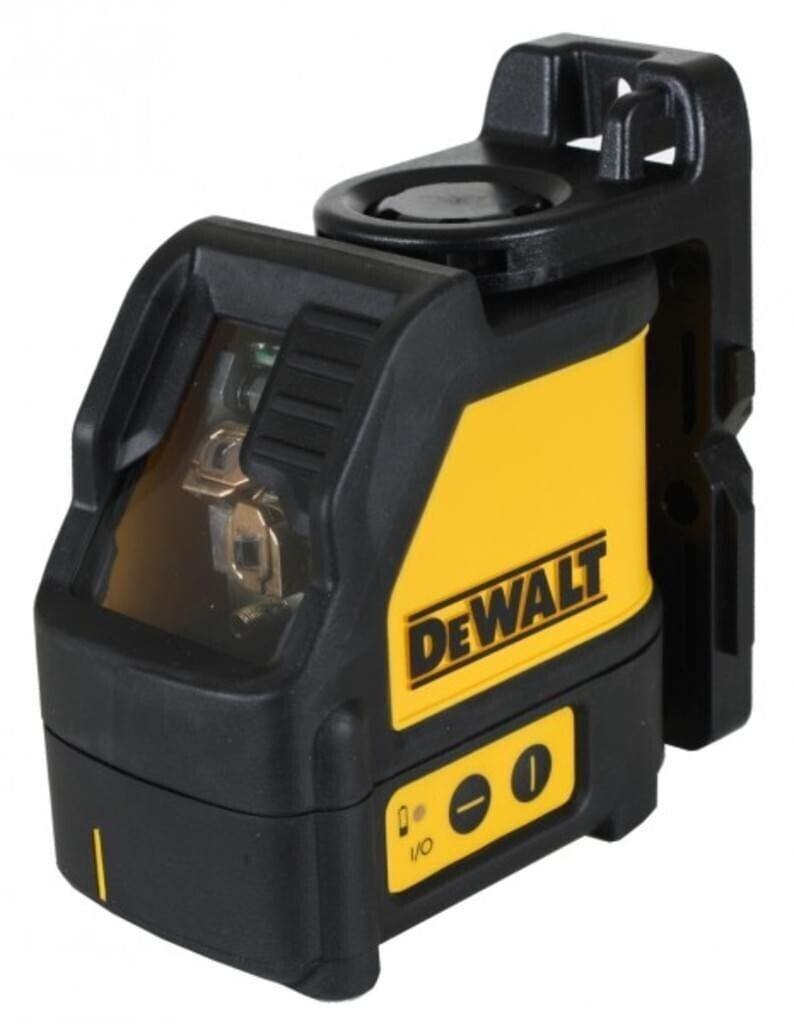
Price
The market offers a wide range of construction lasers, from budget-friendly options to more sophisticated and expensive models. If you are looking for an entry-level, cost-effective option, consider the Bosch GLL2-10 which offers a self-leveling feature and a working range of up to 30 feet. Another economical choice is the Spectra Precision LL100N, a rugged laser that can self-level horizontally within ±5 degrees and has a working range of up to 1,150 feet. For mid-range prices, the Leica Rugby 610 is worth considering, offering a self-leveling feature within ±5 degrees and a working range of up to 3,600 feet. If budget is not a constraint and you require high precision and advanced features, the Topcon RL-H5A is a top-tier option, providing a working range of up to 2,600 feet and an accuracy of ±1/16 inch at 100 feet. Remember that the price range for construction lasers varies significantly, so by considering your specific requirements and budget, you can find the best construction laser to suit your needs.
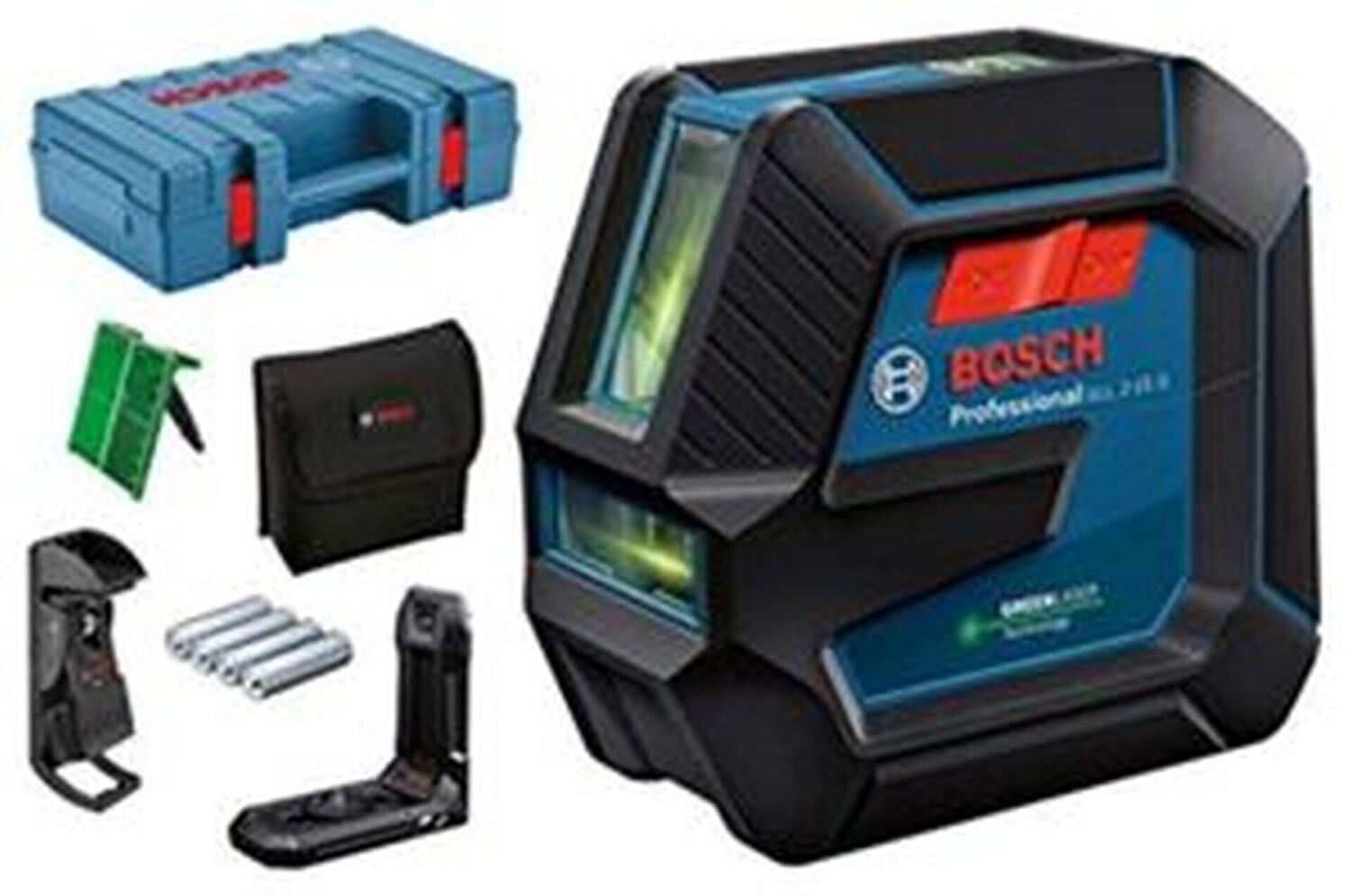

Variety of brands
Different brands offer different features and specifications, catering to a wide range of construction needs. One popular brand in the industry is Topcon, known for their high-quality and durable construction lasers. They offer a range of products suitable for various applications, such as the Topcon RL-H5A Self-Leveling Rotary Grade Laser. Another trusted brand is Spectra Precision, which is known for its innovative technology and precision. Their Spectra Precision GL612N Dual Grade Laser is a highly reliable choice for demanding construction projects. While Topcon and Spectra Precision are well-regarded brands, they tend to be priced at a higher range. For those on a budget, the Bosch brand offers a more affordable option with their Bosch GPL 5 Five-Point Self-Leveling Alignment Laser, which provides accurate leveling and alignment. Overall, choosing the best construction laser brand depends on individual requirements and preferences.